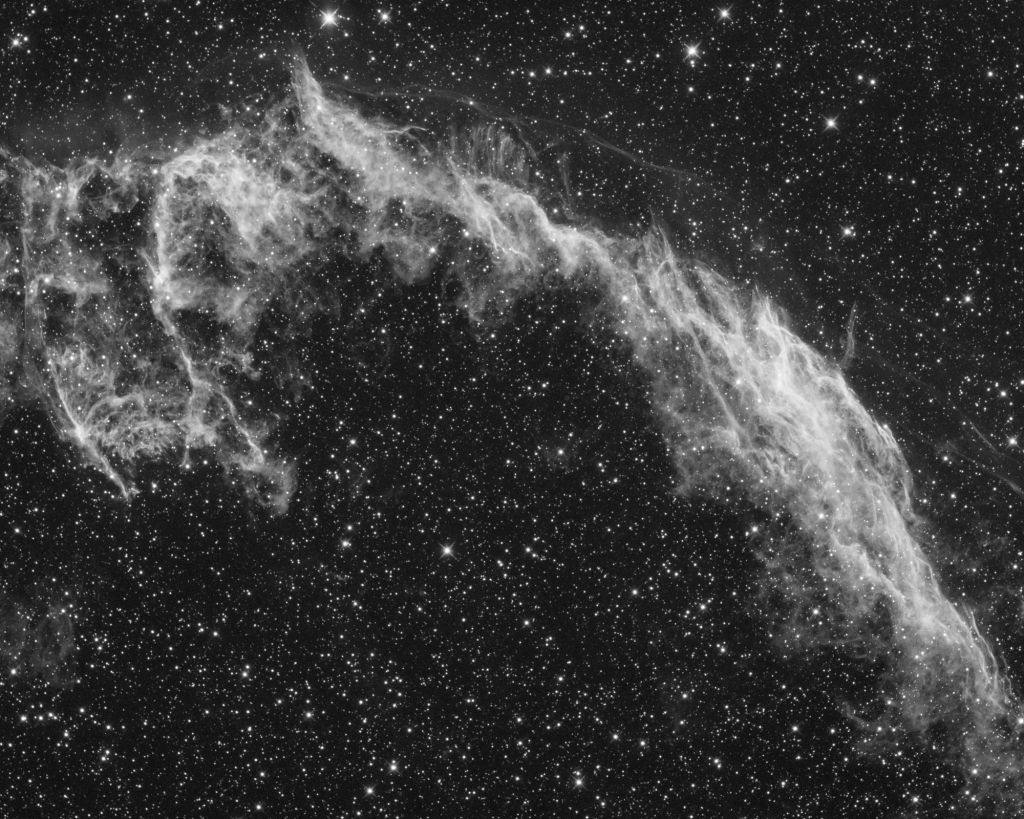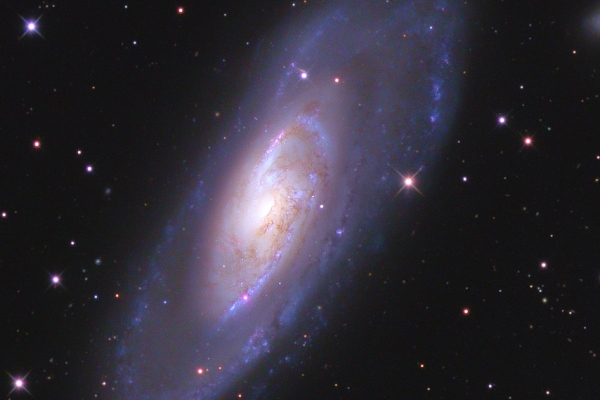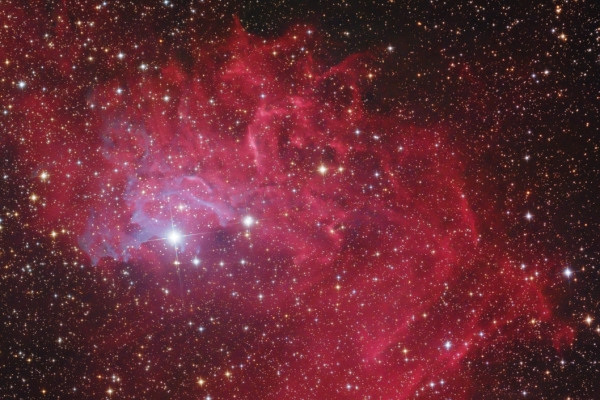The Eastern Veil Nebula
NGC6992 and NGC6995

Technical data
| Instrument: | 173/700 Newton-astrograph (ZsIO), SkyWatcher comacorrector F/4 |
| Camera: | Atik One 6.0 |
| Filter: | Baader H-alpha 7nm |
| Mount: | SkyWatcher NEQ6 Pro Synscan (modified) |
| Guiding: | Lacerta M-Gen autoguider, OAG |
Image data
| Exposure time: | 18 x 15 mins |
| Location, date: | Hungary, Izsákfa - 2015.July 21. |
| Transparency: | 6/10 |
| Seeing: | 4/10 |
| Temperature: | 17 °C |
| FWHM: | 2.60" |
| Processing: | CCDStack, Photoshop |
Photo in progress:
50%
50%
Description
Delicate in appearance, these filaments of shocked, glowing gas, draped in planet Earth's sky toward the constellation of Cygnus, make up the eastern part of the Veil Nebula.
Technical data
| Instrument: | 173/700 Newton-astrograph (ZsIO), SkyWatcher comacorrector F/4 |
| Camera: | Atik One 6.0 |
| Filter: | Baader H-alpha 7nm |
| Mount: | SkyWatcher NEQ6 Pro Synscan (modified) |
| Guiding: | Lacerta M-Gen autoguider, OAG |
Image data
| Exposure time: | 18 x 15 mins |
| Location, date: | Hungary, Izsákfa - 2015.July 21. |
| Transparency: | 6/10 |
| Seeing: | 4/10 |
| Temperature: | 17 °C |
| FWHM: | 2.60" |
| Processing: | CCDStack, Photoshop |
© Patrik Tarczi 2016
Recommended photos

M106 and it's neighborhood
The most famous galaxy in the constellation Canes Venatici and it's rich surroundings can be seen here.

The Triangulum Galaxy
The Triangulum Galaxy is the brightest galaxy of the constellation Triangulum, which is just visible to the naked eye.

The Flaming Star Nebula
A runaway star lights the Flaming Star Nebula in this cosmic scene. The Flaming Star Nebula's billowing interstellar clouds of gas and dust located in constellation Auriga.


